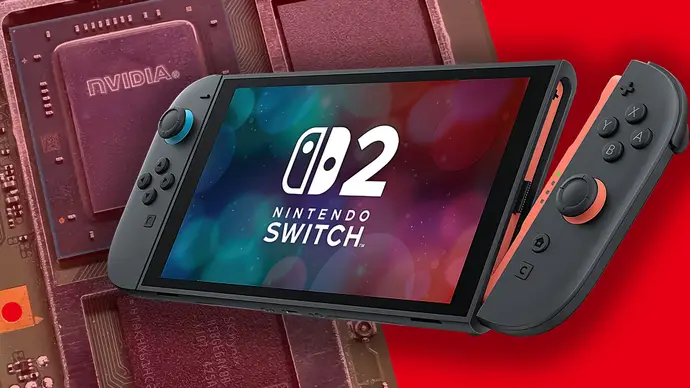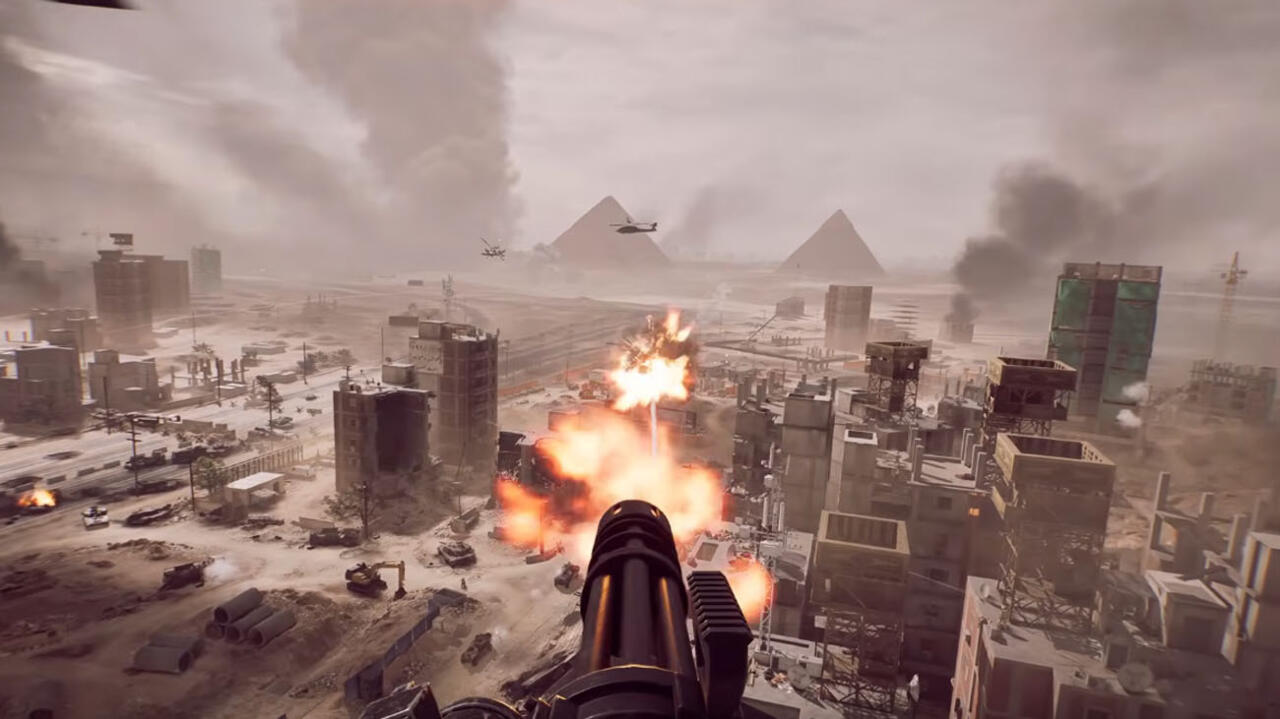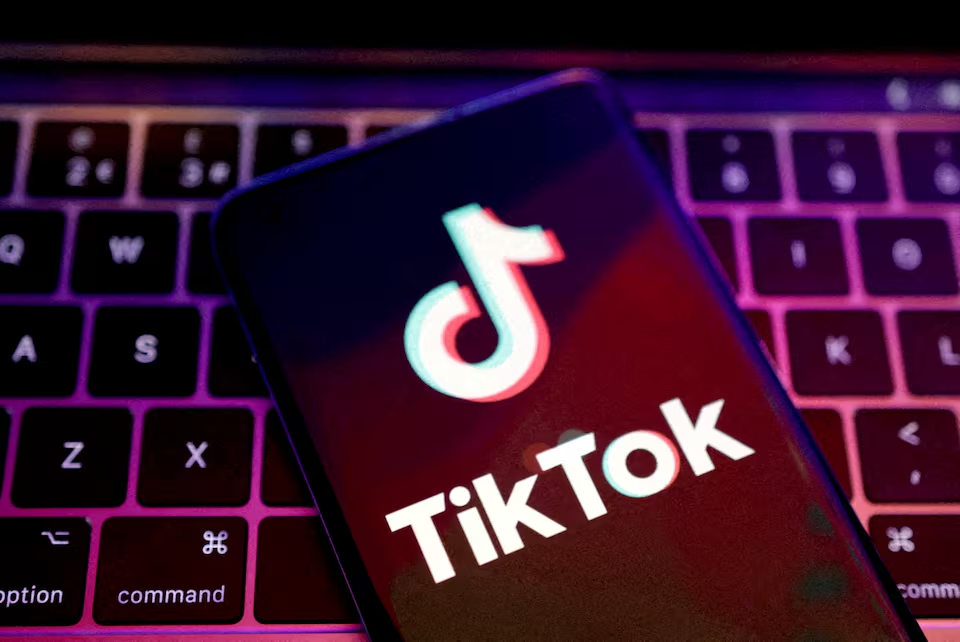
Nintendo Switch 2: final tech specs and system reservations confirmed
A lot of the detail we have focuses on the vaguest element of the official specification: the "custom processor made by Nvidia". When the original Switch first launch, Nintendo described it as a "custom Nvidia Tegra processor" when in reality it was effectively a vanilla Tegra X1. However, Switch 2's SoC -, described in shipping manifests and Nvidia leaks as T239 - is very much custom silicon designed specifically for Nintendo. A lot of the confirmed detail tallies with existing leaks - but we have learned more.
Starting with the CPU, Nvidia and Nintendo have indeed settled on the ARM Cortex A78C, running the ARMv8 64-bit instruction set with cryptography extensions enabled - 32-bit is not supported by the SDK. Looking at the official specifications shared by ARM there are various cache configurations available, but the Switch 2 iteration has 64K of L1 instruction cache and another 64K or L1 data cache. Moving onto L2, each of the eight cores has 256K, while all eight cores can share 4MB of L3 cache.
| Switch 2: Nvidia T239 | Switch 1: Nvidia Tegra X1 | |
|---|---|---|
| CPU Architecture | 8x ARM Cortex A78C | 4x ARM Cortex A57 |
| CPU Clocks | 998MHz (docked), 1101MHz (mobile), Max 1.7GHz | 1020 MHz (docked/mobile), Max 1.785GHz |
| CPU System Reservation | 2 cores (6 available to developers) | 1 core (3 available to developers) |
| GPU Architecture | Ampere | Maxwell |
| CUDA Cores | 1536 | 256 |
| GPU Clocks | 1007MHz (docked), 561MHz (mobile), Max 1.4GHz | 768MHz (docked), up to 460MHz (mobile), Max 921MHz |
| Memory/Interface | 128-bit/LPDDR5 | 64-bit/LPDDR4 |
| Memory Bandwidth | 102GB/s (docked), 68GB/s (mobile) | 25.6GB/s (docked), 21.3GB/s (mobile) |
| Memory System Reservation | 3GB (9GB available for games) | 0.8GB (3.2GB available for games) |
So, the original Switch's Tegra X1 featured ARM Cortex A57 cores - four of them, with one reserved for OS features, leaving three free for developers. There's a similar ratio in Switch 2, with six cores available to developers and two reserved by Nintendo for running the operating system. CPU clocks are confirmed but still a bit of a mystery: in mobile mode, the CPU runs at 1100MHz, dropping down to 998MHz in its performance mode, typically used when running docked (a distinction we make because there's nothing stopping developers running Switch 1 or Switch 2 in mobile mode when docked). We still don't have an explanation on why mobile mode CPU clocks are higher than the performance mode, but memory bandwidth drops in mobile mode which would likely have an impact on CPU performance - that's just a theory on our part.
Interestingly Nintendo does specify that the maximum clock for the CPU is 1.7GHz - a lot higher than the other specified figures. Again, speculation here, but this could be a theoretical maximum that Nintendo could open up at some point in the future or use in special circumstances. Back in the day, Nintendo improved loading times on Switch 1 games by downclocking the GPU on loading screens and using the thermal headroom to ramp up the CPU to its maximum 1.785GHz. A faster CPU means faster decompression of assets. So, while 1100MHz and 998MHz clocks are confirmed, a theoretical 1.7GHz is possible.
Moving on to the graphics hardware and again, what we're effectively looking at confirmation of existing spec leaks. While Switch 1 used the Nvidia Maxwell architecture from the GTX 900 series, Switch 2 uses the Ampere architecture, as seen on the RTX 30 series. Similar to the Switch 1 GPU, think of it as a miniaturised version of a consumer GPU. 1536 CUDA cores are confirmed as are the clock speeds - 561MHz when running in handheld mode, 1007MHz when docked. Again though, there is a maximum stated clock of 1.4GHz and developers can adjust the clock rate - but it's unclear if running at higher than the standard handheld/docked clocks is actually possible. Developers don't get full GPU resources though, some of it is reserved by the system.
Make no mistake though, this is a full Ampere GPU, rated for 3.072 TFLOPs when running in docked mode according to Nintendo itself, so by extension that'll drop down to 1.71 TFLOPs when running in mobile mode. TLOPs comparisons against other devices are irrelevant at this point. In a world where memory bandwidth is hugely important for mobile devices and where the concept of 'FLOPflation' (as Mark Cerny put it) can over-emphasise a GPU's gaming potential, ultimately, it'll be down to the games themselves to show us what the system is truly capable of.
Moving on, obviously DLSS has been confirmed by Nintendo and Nvidia as has Ampere's ray tracing features - Switch 2 is rated for around 10 gigarays per second, doubling up to 20 gigarays when docked. Of course, RT is taxing on a resource constrained system so it's no surprise that we've not actually seen any RT effects in any games showcased to date - but I'd expect to see it happen at some point, especially with Switch 2 running in its performance mode.
Moving on to memory, the leaks are once again confirmed. Switch 2 uses 12GB of LPDDR5X, delivered via two 6GB modules. Memory bandwidth is confirmed as 102GB/s in performance mode up against 68GB/s when running in handheld mode. There's nothing new here, but what we can now confirm is that of the 12GB of memory, 3GB of that is reserved by the system itself, leaving 9GB available for developers. Compared against Switch 1, the older console shipped with just 4GB of memory in total with 3.2GB available to developers - so Nintendo is certainly reserving a much bigger chunk of total RAM for non-gaming functions this time around.
Make no mistake though, this is a full Ampere GPU, rated for 3.072 TFLOPs when running in docked mode according to Nintendo itself, so by extension that'll drop down to 1.71 TFLOPs when running in mobile mode. TLOPs comparisons against other devices are irrelevant at this point. In a world where memory bandwidth is hugely important for mobile devices and where the concept of 'FLOPflation' (as Mark Cerny put it) can over-emphasise a GPU's gaming potential, ultimately, it'll be down to the games themselves to show us what the system is truly capable of.
Moving on, obviously DLSS has been confirmed by Nintendo and Nvidia as has Ampere's ray tracing features - Switch 2 is rated for around 10 gigarays per second, doubling up to 20 gigarays when docked. Of course, RT is taxing on a resource constrained system so it's no surprise that we've not actually seen any RT effects in any games showcased to date - but I'd expect to see it happen at some point, especially with Switch 2 running in its performance mode.
Moving on to memory, the leaks are once again confirmed. Switch 2 uses 12GB of LPDDR5X, delivered via two 6GB modules. Memory bandwidth is confirmed as 102GB/s in performance mode up against 68GB/s when running in handheld mode. There's nothing new here, but what we can now confirm is that of the 12GB of memory, 3GB of that is reserved by the system itself, leaving 9GB available for developers. Compared against Switch 1, the older console shipped with just 4GB of memory in total with 3.2GB available to developers - so Nintendo is certainly reserving a much bigger chunk of total RAM for non-gaming functions this time around.
In terms of other information we've learned, Game Chat is clearly an important part of the Switch 2 package - but it does have a significant impact on system resources to the point where Nintendo actually provides developers with a Game Chat testing tool - this simulates API latency and L3 cache misses that the real world Game Chat system incurs on the system, meaning developers can test this without needing active Game Chat sessions running. We'll be interested to see how Game Chat may (or may not) impact game performance as this does seem to be an area of developer concern.
The Nintendo SDK also fully supports Nvidia DLSS - or Deep Learning Super-Sampling. As confirmed by CD Projekt RED and seen in Cyberpunk 2077 and almost certainly in Street Fighter 6, we're told that there are DLSS 1x, 2x and 3x options in addition to DLAA. So, DLAA is basically native resolution rendering with DLSS used purely for extremely high quality anti-aliasing. DLSS 1x, 2x and 3x - in that context, this is likely to be the equivalents to PC's performance, balanced and quality modes, though Cyberpunk 2077 seems to be using both dynamic resolution scaling and DLSS in concert as opposed to staying wedded to one mode particularly.
And that's the extent of what we know about Switch 2 right now in terms of its hardware specifications over and above what Nintendo has revealed and the extent to which system reservation eats into the resources available to developers. By and large, the hardware leaks - going all the way back to 2021 - have proven accurate, which gives you some kind of idea of just how long it takes to get a console to market. But with kits now in developer hands and some visibility on the games that have been revealed so far, we can get a better measure of what the system is capable of. Ultimately though, the games do the talking and we're really looking forward to June 5th.








